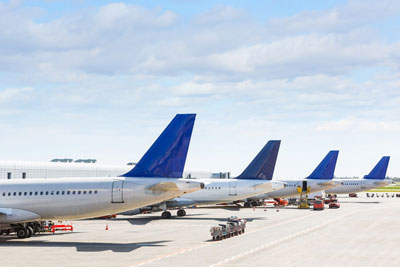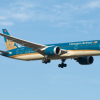 As the economic growth of the world’s most promising aviation market – China – cools down, the opportunities for newcomers on the aircraft investment market go tighter and entry barriers – higher. Nonetheless, this type of investment activity is expected to keep generating double digit returns and thus becoming more popular than other investment markets that keep roller-coasting amid various geopolitical processes. And while many first-time investors aim newly-built aircraft, mid-age airplanes can prove to be a worthy asset as well.
As the economic growth of the world’s most promising aviation market – China – cools down, the opportunities for newcomers on the aircraft investment market go tighter and entry barriers – higher. Nonetheless, this type of investment activity is expected to keep generating double digit returns and thus becoming more popular than other investment markets that keep roller-coasting amid various geopolitical processes. And while many first-time investors aim newly-built aircraft, mid-age airplanes can prove to be a worthy asset as well.
The world’s aviation ended 2016 on an upscale trend – the global passenger traffic increased up by 6% while air cargo traffic – up by 1.5%. Simultaneously, world’s leading aircraft manufacturers are increasing their production rates by delivering 1436 aircraft in 2016, or 3.6% more than in 2015.
“Few can doubt that China has all what it takes to become the world’s largest aviation market in near future. That’s why this country, together with the rest of Asia, for that matter, becomes a major player in the aircraft trading and leasing industry. The interest towards the aircraft business is driven by a growing demand for extra fleet that is triggered by an exploding middle class. At the same time, local financial institutions have accumulated outstanding capitals that are seeking to be employed in capital-intense, long-term projects,” comments Tadas Goberis, Chairman of the Board and CEO at a European aircraft leasing company AviaAM Leasing. Last year, the company and a Henan-based investor HNCA launched a joint-venture in China which had already secured a deal for approx. 800 million USD-worth 16 Airbus A320 family aircraft.
“Meantime, dozens of new airlines being launched each year around the globe. Every single one of them needs aircraft. But the thing is, almost none of them can afford to own a 50-100 million USD worth brand new machine. Even larger, established airlines, many of which  operate with a net margin below 5%, are rarely ready to give away substantial amounts of cash on a single deal,” shares Tomas Sidlauskas, VP Sales at AviaAM Leasing.
operate with a net margin below 5%, are rarely ready to give away substantial amounts of cash on a single deal,” shares Tomas Sidlauskas, VP Sales at AviaAM Leasing.
According to experts from Boeing Capital, each year aviation market requires over 120 billion USD of funding to support airlines’ fleet expansion appetites. Moreover, it’s expected that the numbers will jump by another 30-40 billion USD in the upcoming several years.
Most of that money will go for funding the deliveries of brand new, freshly manufactured airplanes which may cost up to 3 times more than a mid-age airplane. Moreover, unless someone is selling its place in the line, new buyers are required to wait several years until they get the plane due to growing manufactures’ backlog.
The prices for newly built aircraft are not an option for small and mid-size airlines, as well as for startup carriers. They need something cheaper and they need it now. That’s the niche for mid-age airplanes which are in operations for 6-12 years already. These airplanes might not be as efficient as the new generation ones, but as long as the fuel price remains relatively low, operating a nextgen airplane gives quite negligible fuel efficiency savings of less than 1 USD per nautical mile.
“The global fleet is expected to double in a couple of decades by replacing currently used aircraft and providing extra machines for airlines’ expansion. Also about 5000-6000 commercial airplanes that have been recently manufactured will remain in the market. The majority of those airplanes are narrow-body, like Boeing 737-800 and Airbus A320 Family which are the most popular aircraft types and thus are easy to re-lease. Thus there is quite a big market of mid-life airplanes, if you know where to look for,“ comments Tomas Sidlauskas.
According to AviaAM Leasing, investing into mid-life airplanes is available for both smaller and major investors, since the value of projects can vary from a couple of million to a billion US dollars. Most importantly, such projects allow investors to employ large capitals which will be delivering 10-12% returns during 5-10 years period.
“Take an eight year old Boeing 737-800. You can find one in a good shape for 20-25 million USD. With a financially stable airline to operate it for 6 years, the investment can generate more than 10% ROI yearly. However, even if the operator ceases its operations, the airplane itself can be relatively easily relocated to any other world region to a new operator – the flexibility that few assets can provide. Moreover, the aircraft leasing market itself is quite stable. For instance, global aircraft leasing industry remained profitable even during 2008-2009 when the airline industry suffered a 30 billion USD loss. And since the crisis, lease rates for the most popular aircraft types have been stable or even rising,“ says Tomas Sidlauskas, VP Sales at AviaAM Leasing.
In order to build a mid-age aircraft portfolio, the investor – banks, venture funds, hedge funds, private investors, etc. – will need to go through quite a stressing process, covering the location and acquisition of the most profitable asset, structuring the leasing deal with a financially stable airline, ensuring technical aircraft modifications as per end operator’s requirements, thinking through legal solutions for operating region, ensuring the delivery on the scheduled date and in compliance with technical requirements. Finally, continuous post-delivery asset management to ensure that the airplane doesn‘t suffer any damages, undocumented repairs or other actions that can lead to its depreciation.
Without on-hand experience and understanding of the market‘s pitfalls, a newcomer investor can end up with an airplane which has an airframe, engines or other components that require significant extra investments or simply doesn‘t meet the requirements of potential lessees. The investor should be able to properly evaluate the history of repairs and other work on the mid-age aircraft, as well as have a wide access to potential aircraft sellers and operators.
„After all, many aircraft trading and leasing deals are being closed without any publicity. It‘s rather hard to jump on the right train when you don‘t even know if it’s coming in the first place, isn‘t it? In either case, we see that mid-age aircraft leasing becomes more popular in the market thanks to low fuel prices, airlines’ low yield and manufacturer’s long production queues. As an investment, it provides stable and predictable cash profits, but only with a proper technical and strategic asset management and an access to a wide pool of airlines around the globe. As market conditions, including those in China, getting tougher, investors without any background in aviation need partners from within the market who know the specifics,“ concluded Tadas Goberis, Chairman of the Board and CEO at AviaAM Leasing.





